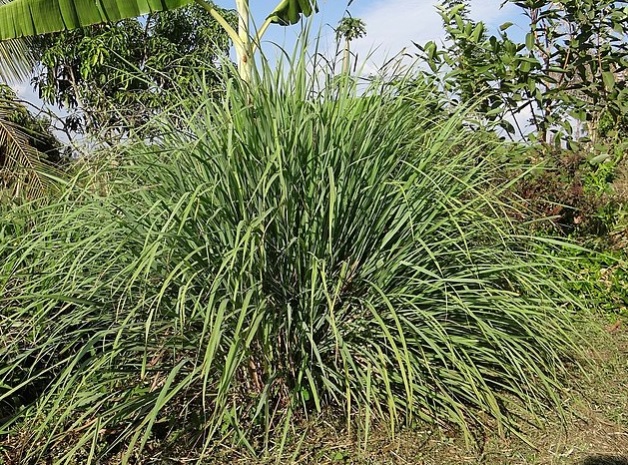Lemongrass
Cymbopogon citratus
Family: Poaceae | Place of Origin: Southeast Asia
Origins and history:
Multiple species of lemongrass are native to various Southeast Asian countries, with Malaysia being considered the specific point of origin for Cymbopogon citratus. The first record of cultivation dates back to 17th century texts from the Philippines. Around 1905, a Sri Lankan researcher named J.F. Jovit began to take an interest in studying the plant, and by 1917 it had been introduced to Haiti and tropical regions of the United States. By 1947, cultivation for commercial purposes had started in Florida and Haiti. Large scale cultivation of lemongrass had already begun in India around a century ago, and after commercialization the country is now the number one exporter of lemongrass products. In the present day, it is widely cultivated in tropical regions of the Americas and Asia, with China, Malaysia, Thailand, Vietnam and Guatemala also being major exporters. As lemongrass is culturally significant to many countries in Asia due to practical, medicinal, and culinary value, its commercial industry is large and the plant as well as its oil extracts are exported worldwide.

Identification characteristics
- Habit: A member of the Poaceae (grass) family, this perennial plant grows in clumps of stiff, upright stems that begin in an underground rhizome. These clumps can reach a height of 6 feet and spread out to be 4 feet wide.
- Leaves: Leaves are linear, sheathed, and lanceolate with a narrow base. The blades of the leaf are generally smooth but can be somewhat rough on the upper side or along edges. If squeezed, the leaves produce a strong smelling yellow essential oil that can be extracted and used for a variety of purposes.
- Flowers: Flowers are possible, but rarely, if ever, occur. If flowers are present, the panicle will be nearly a foot to two feet long, a grayish color, and droop readily. It is easily distinguishable from other grasses by the strong lemon-scented odor it produces due to its oil—the origin of its name.
Uses and preparation
- Lemongrass is widely used for a variety of purposes, many of which involve the essential oil that can be extracted from its leaves. The essential oil of lemongrass has a high percentage (75%) of the compound citral, which is a widely coveted component of many perfumes, cosmetics, and beverages due to its strong citrus-like aroma and taste. It is also commonly used for soaps, detergents, and insect repellents. Lemongrass is considered a staple ingredient in cuisine of many Southeast Asian countries, namely Thailand, Vietnam, Cambodia, Malaysia, Indonesia, and some parts of China and India. Oil, stems and leaves are used to add a zesty flavor to dishes like curries, soups, sauces, and teas.
- The plant is also believed to have medicinal properties, earning it the alternate name of “fever grass”. Some medicinal uses include treatment of stomachaches, digestive problems, fevers, and inflammation. Lemongrass brewed into tea is said to be antibacterial, antifungal, and an antioxidant. Tests for potential toxicity to humans and animals confirmed that no safety risks are posed by the usage and consumption of this plant.
- The entire plant can be utilized, with stems and leaves being harvested at the base for culinary purposes. Stems are edible on their own or as a component of various dishes, while leaves are used fresh or dried as a seasoning. Essential oil can be easily extracted by squeezing the leaves. Stems stripped of leaves and roots can be rooted in a glass of water and used to grow a new plant.